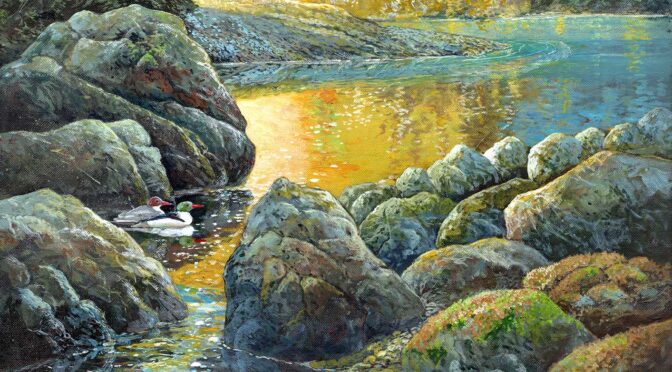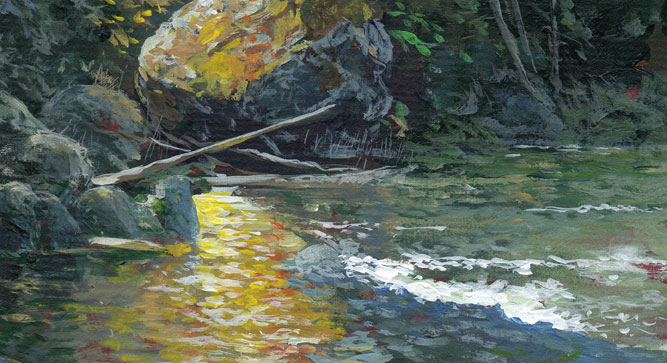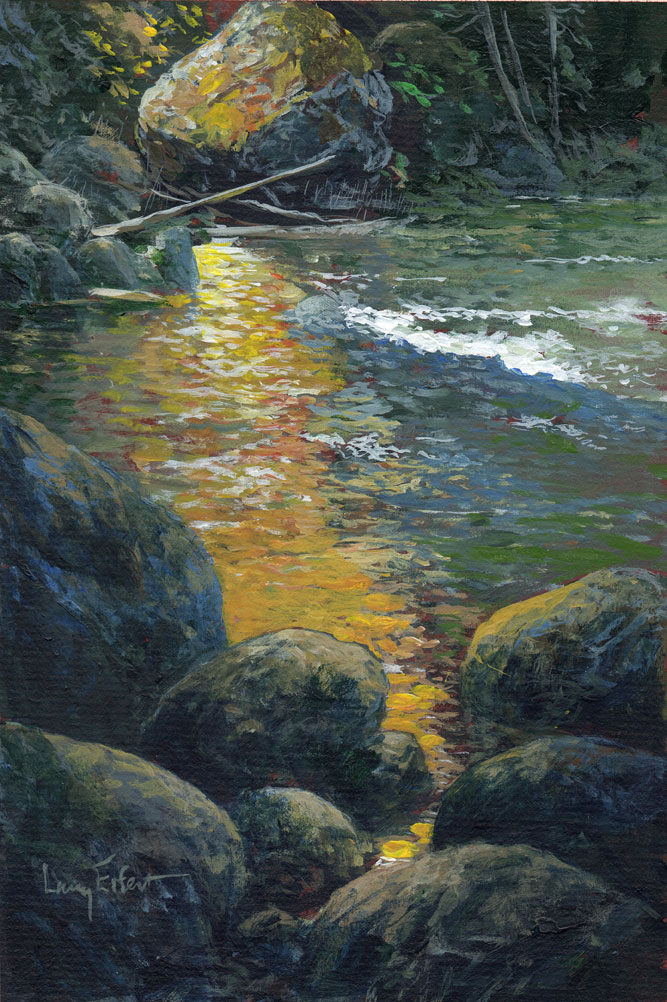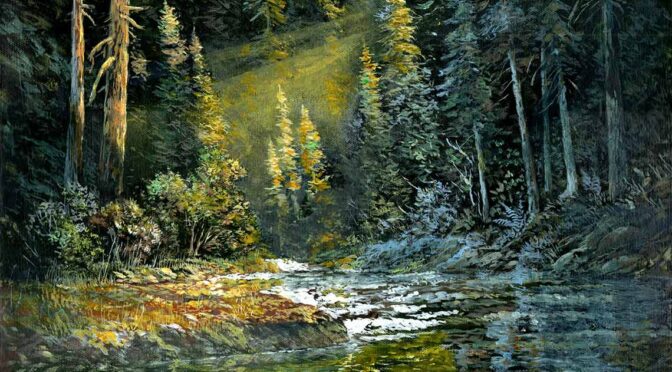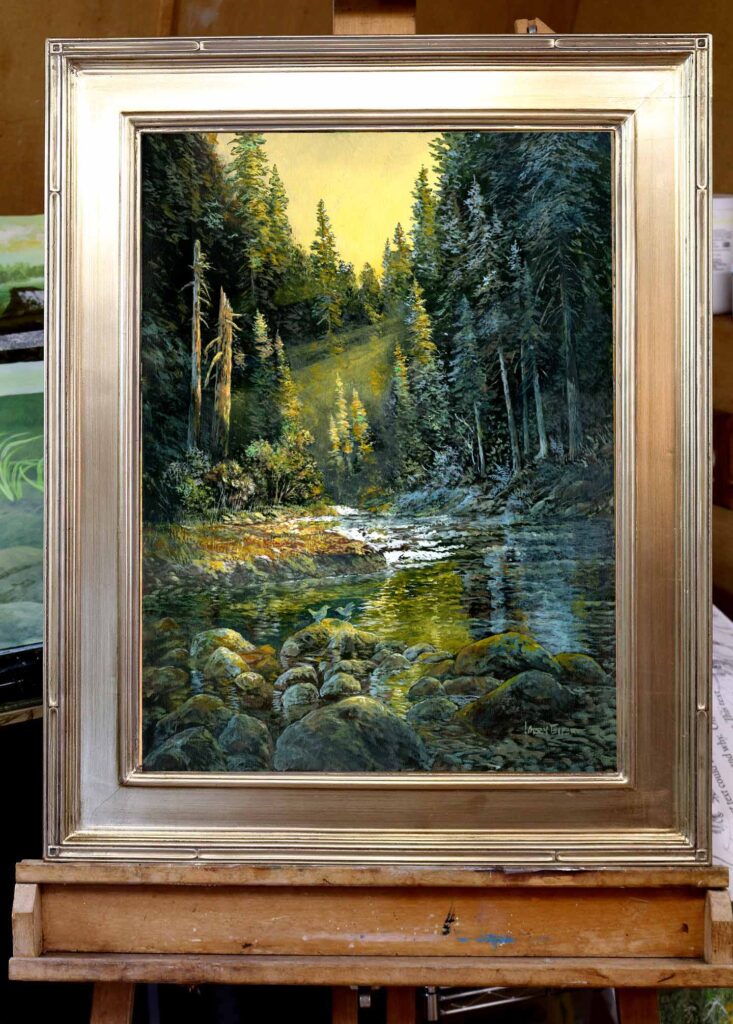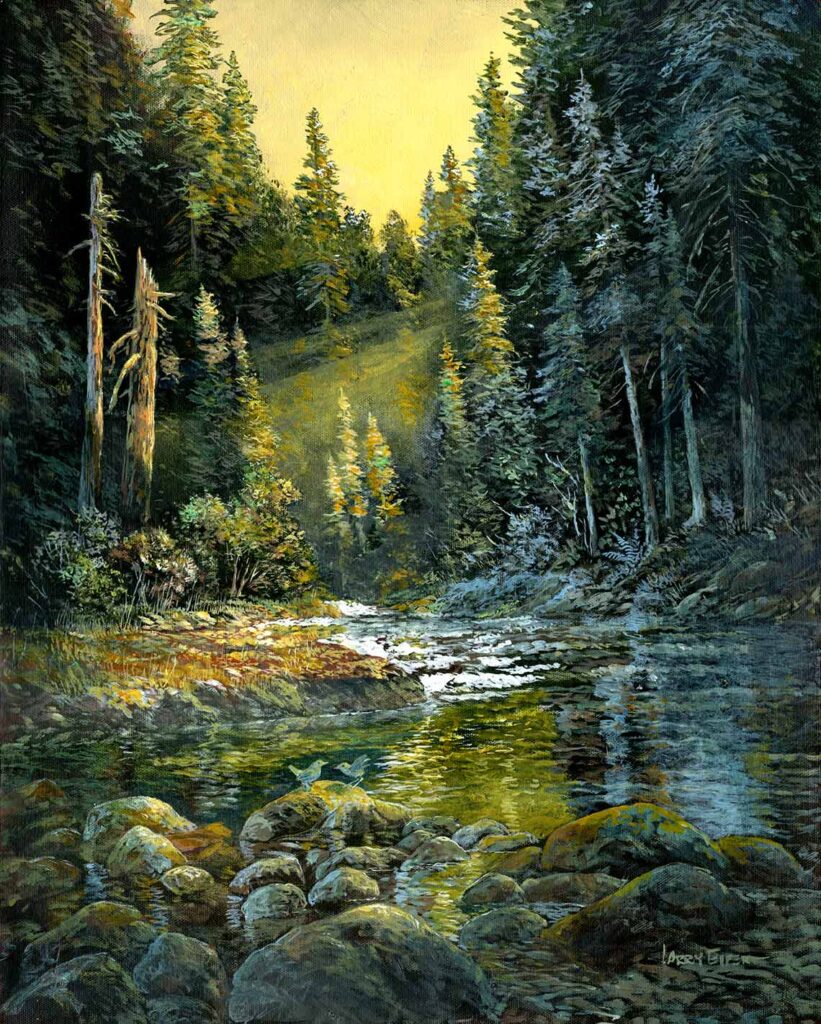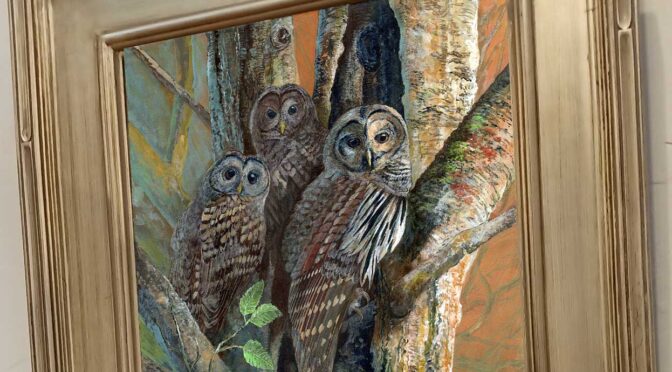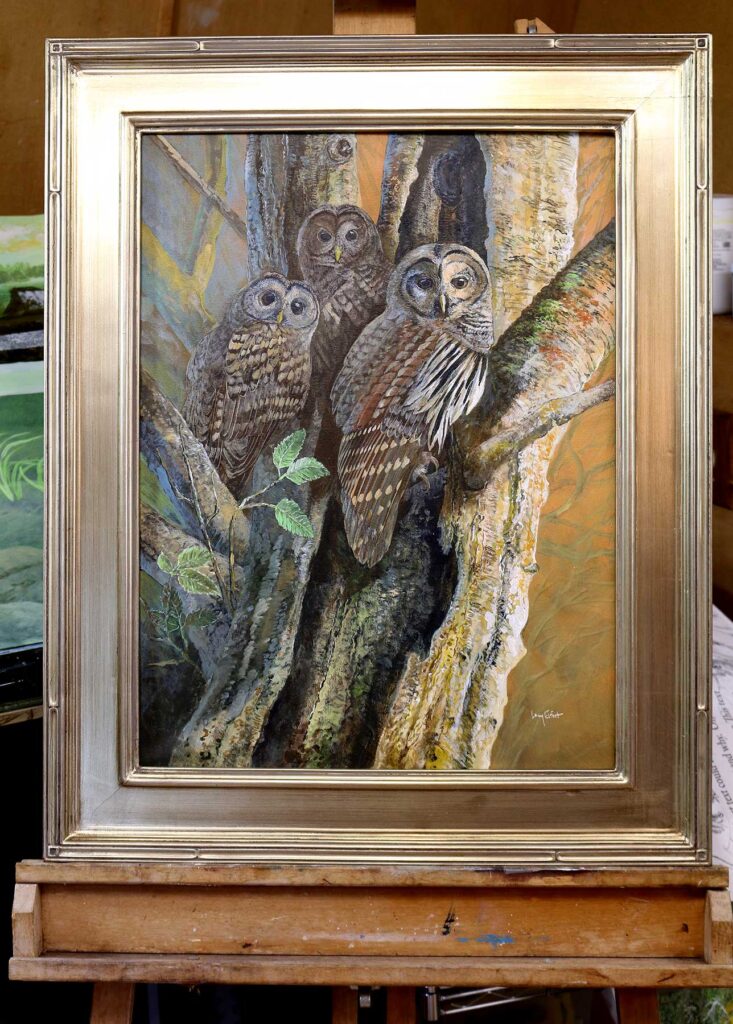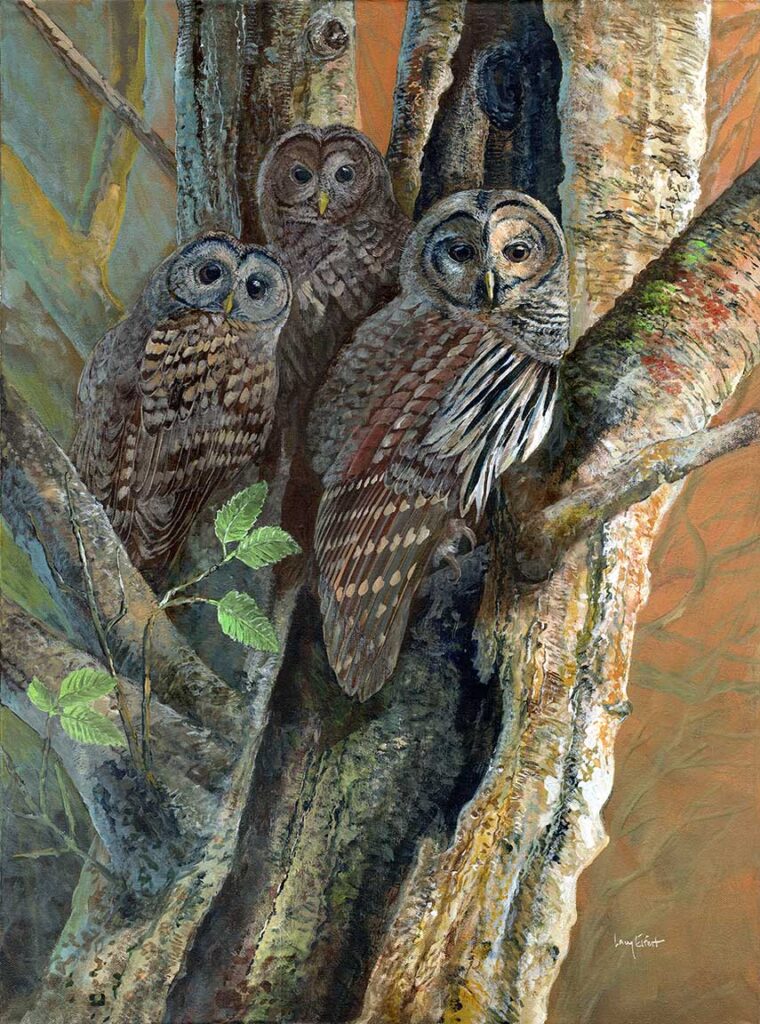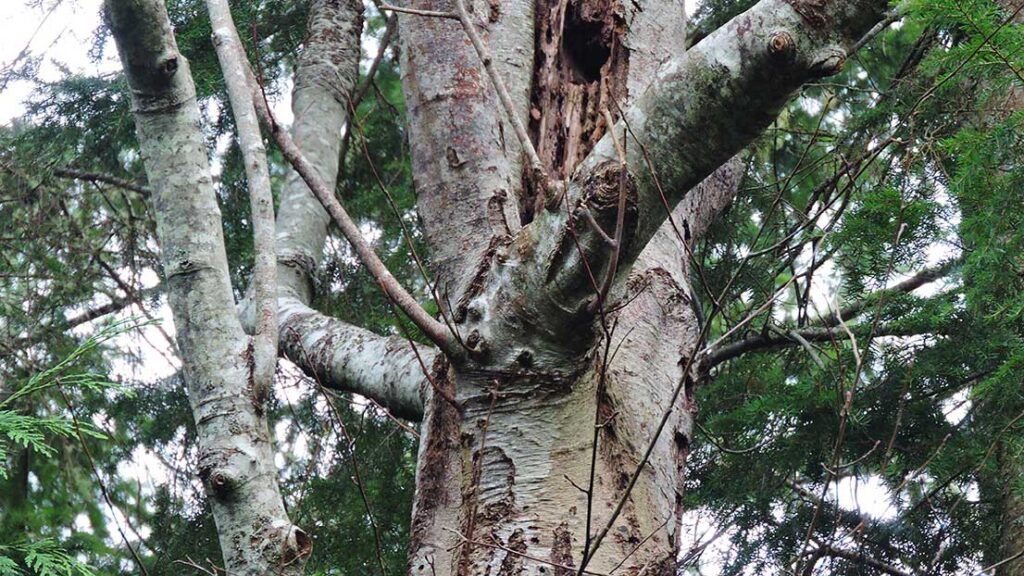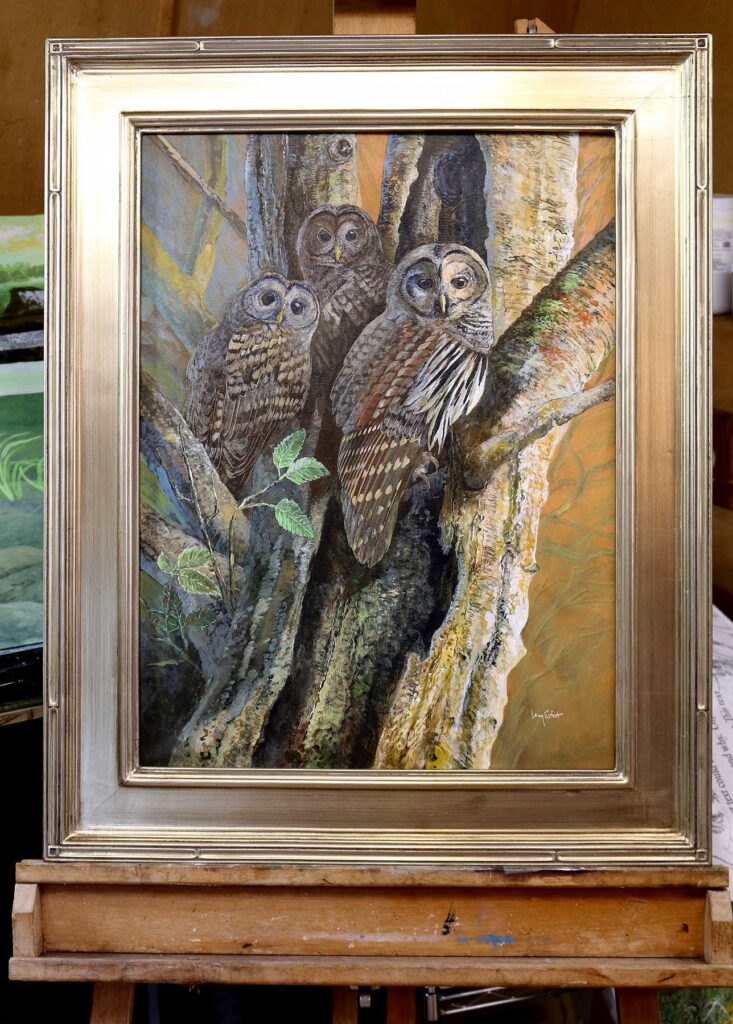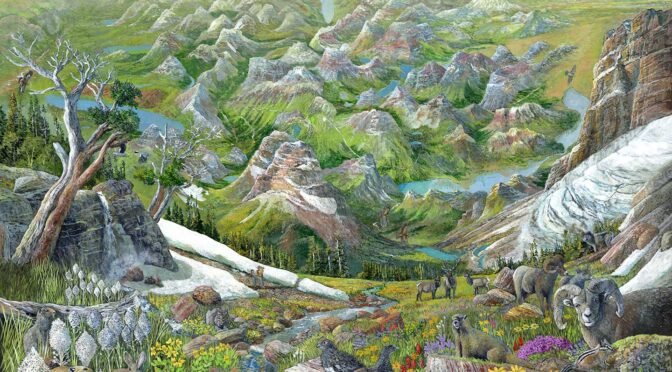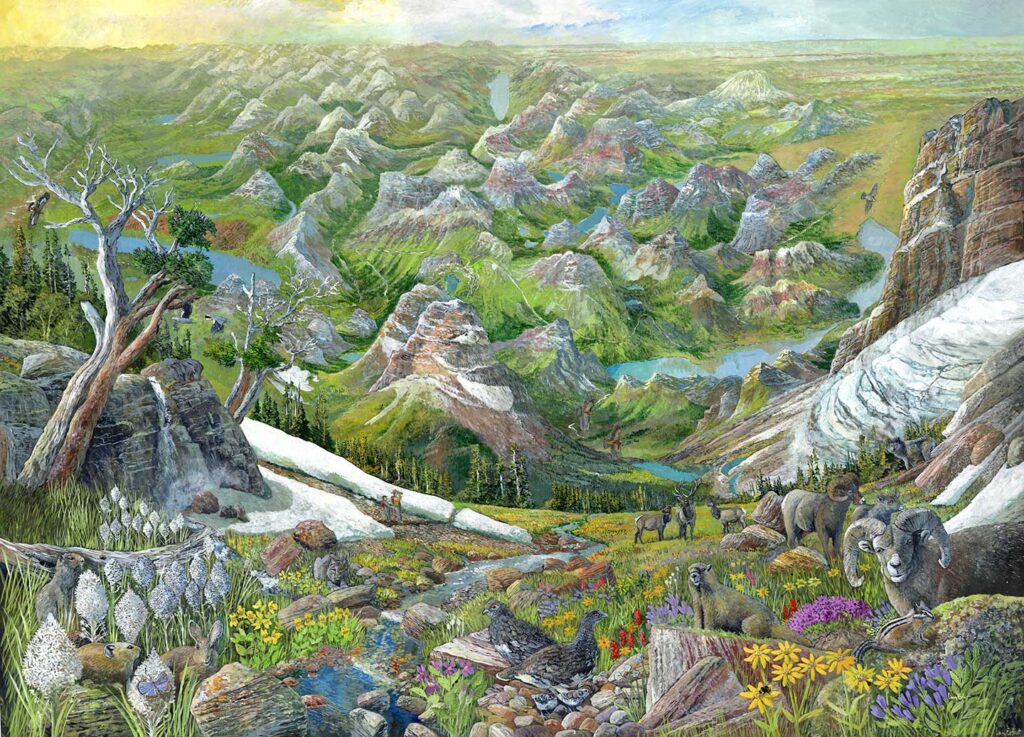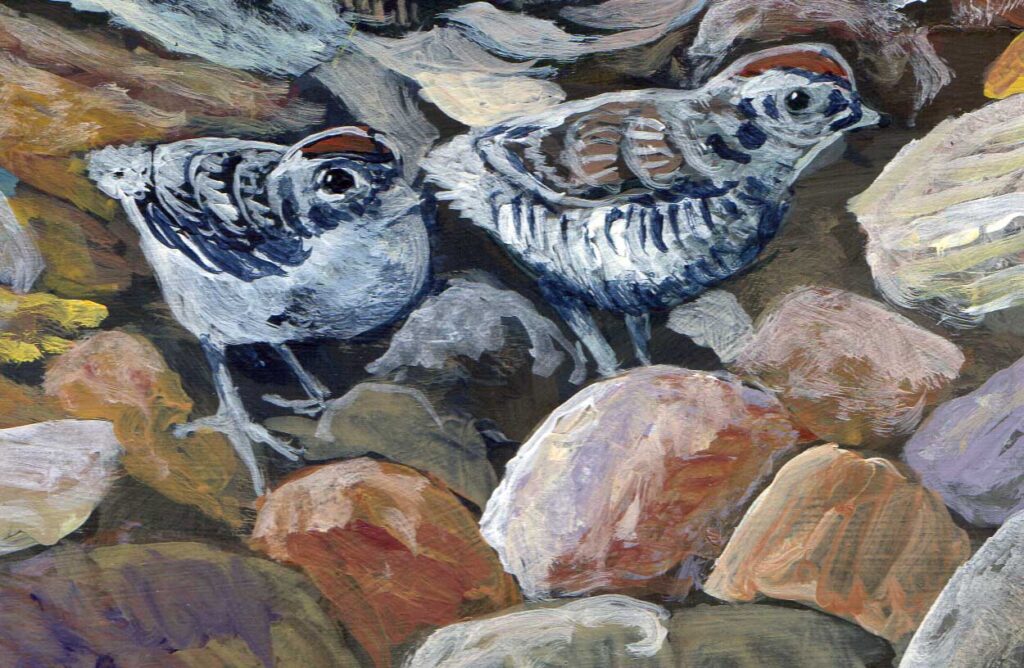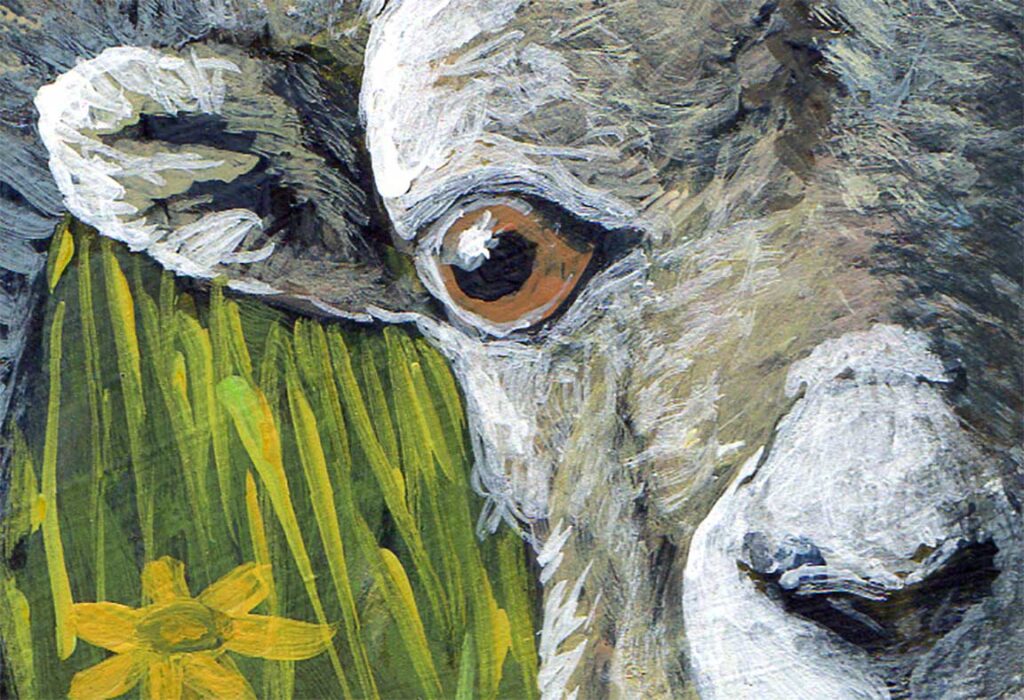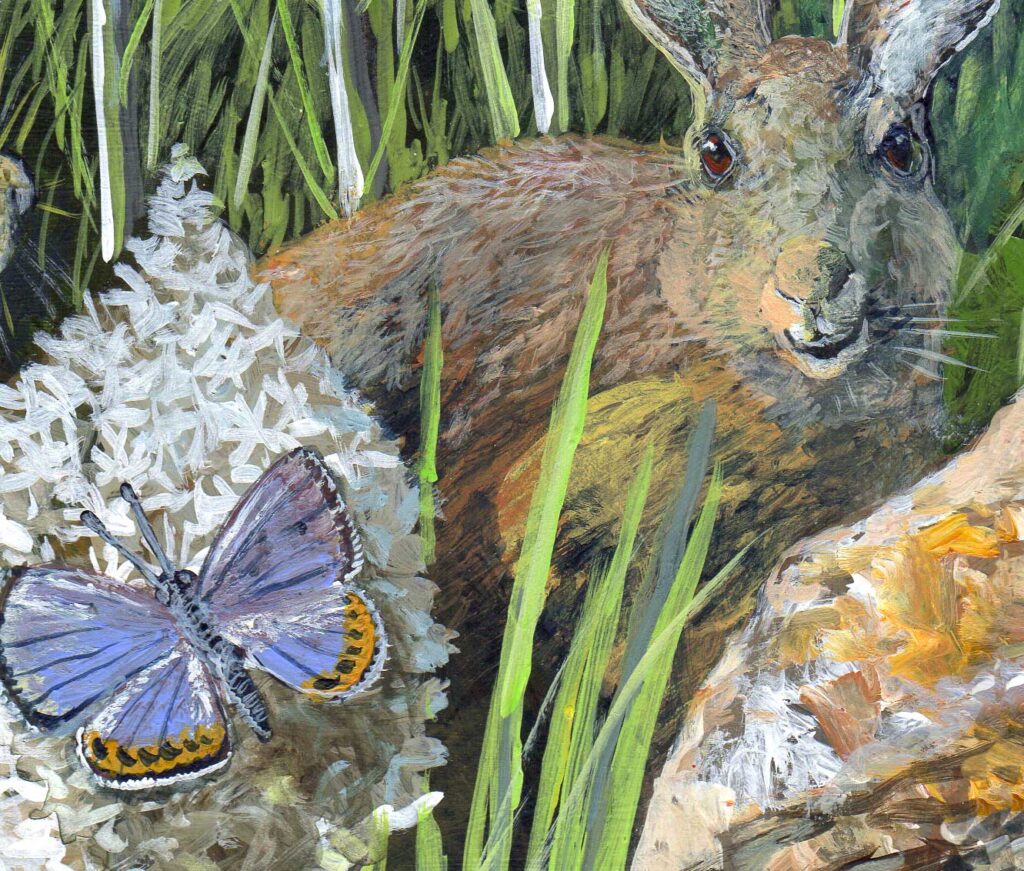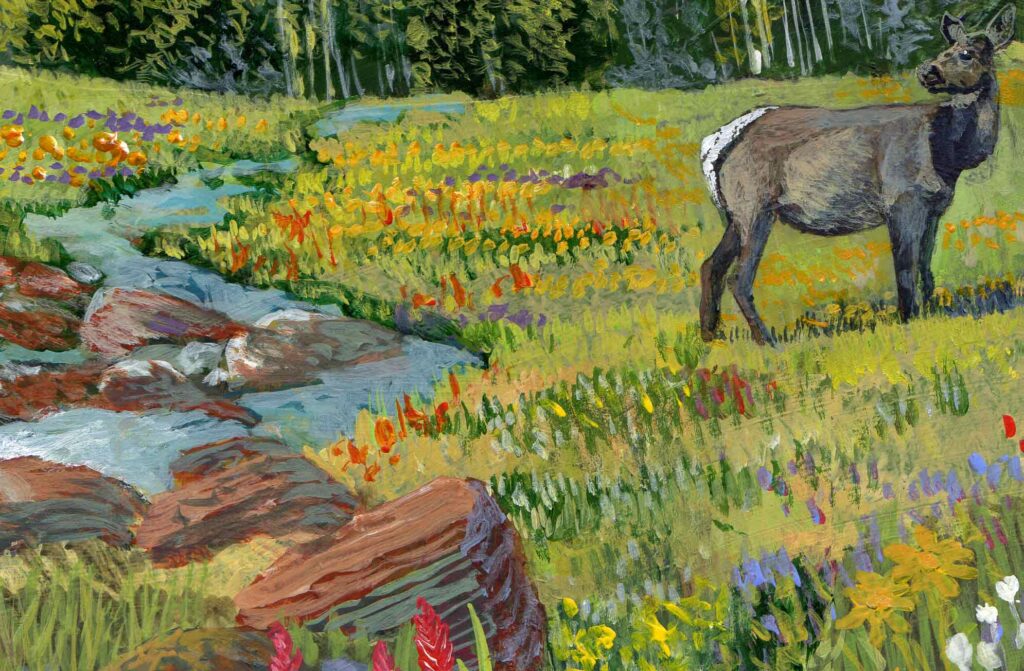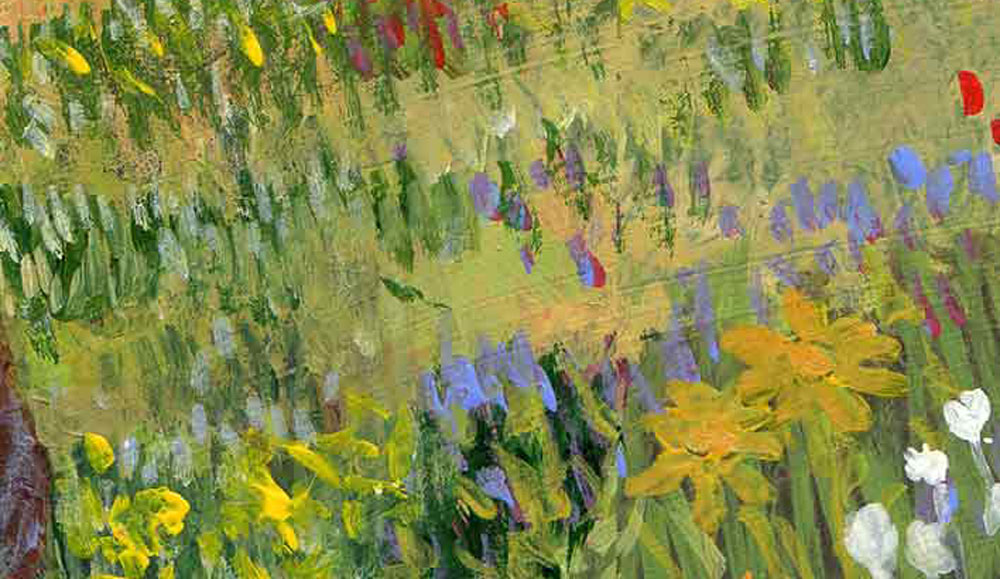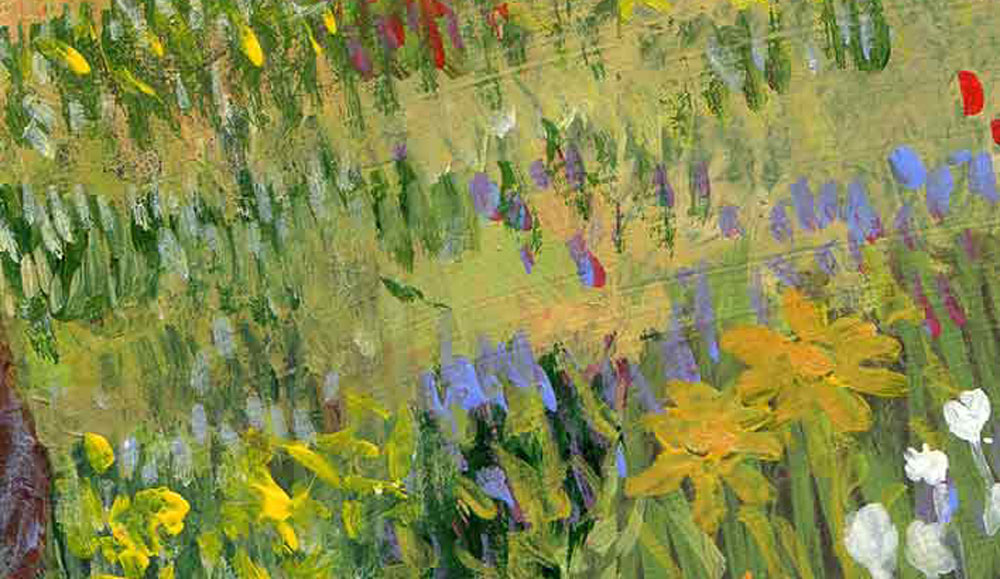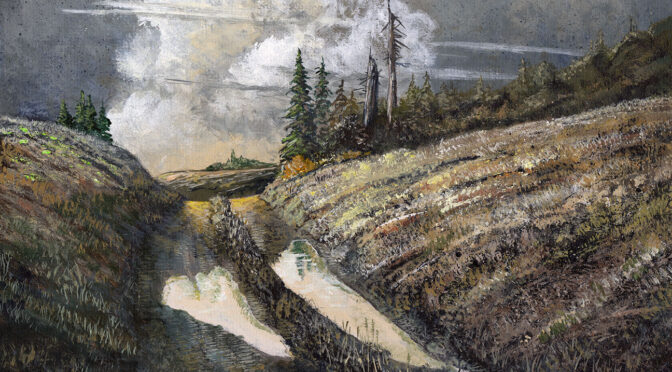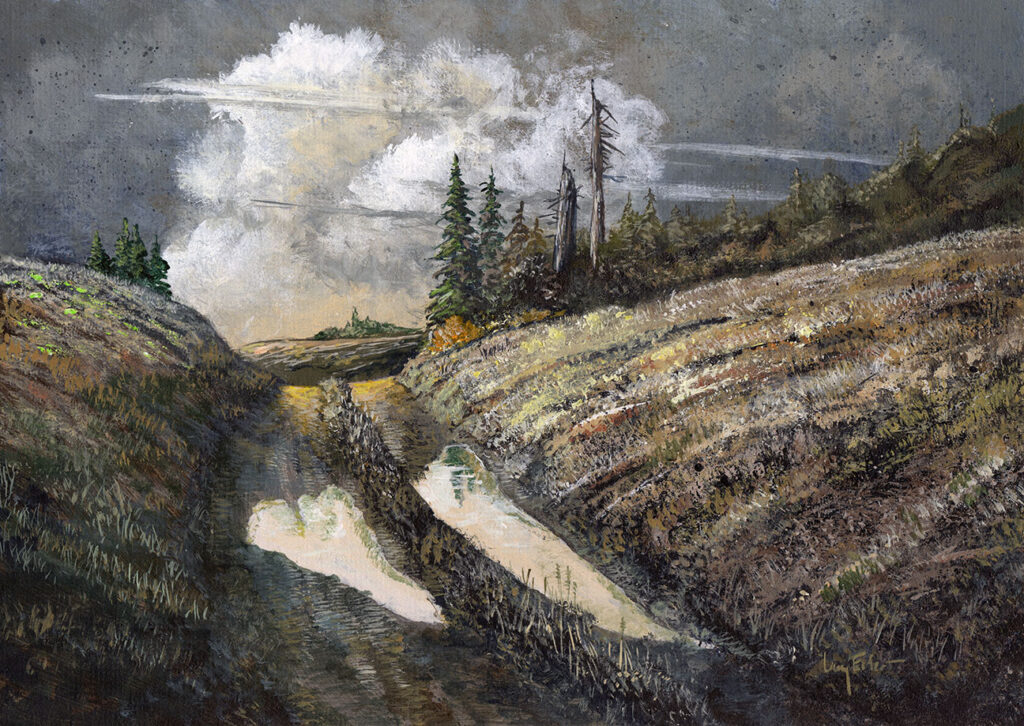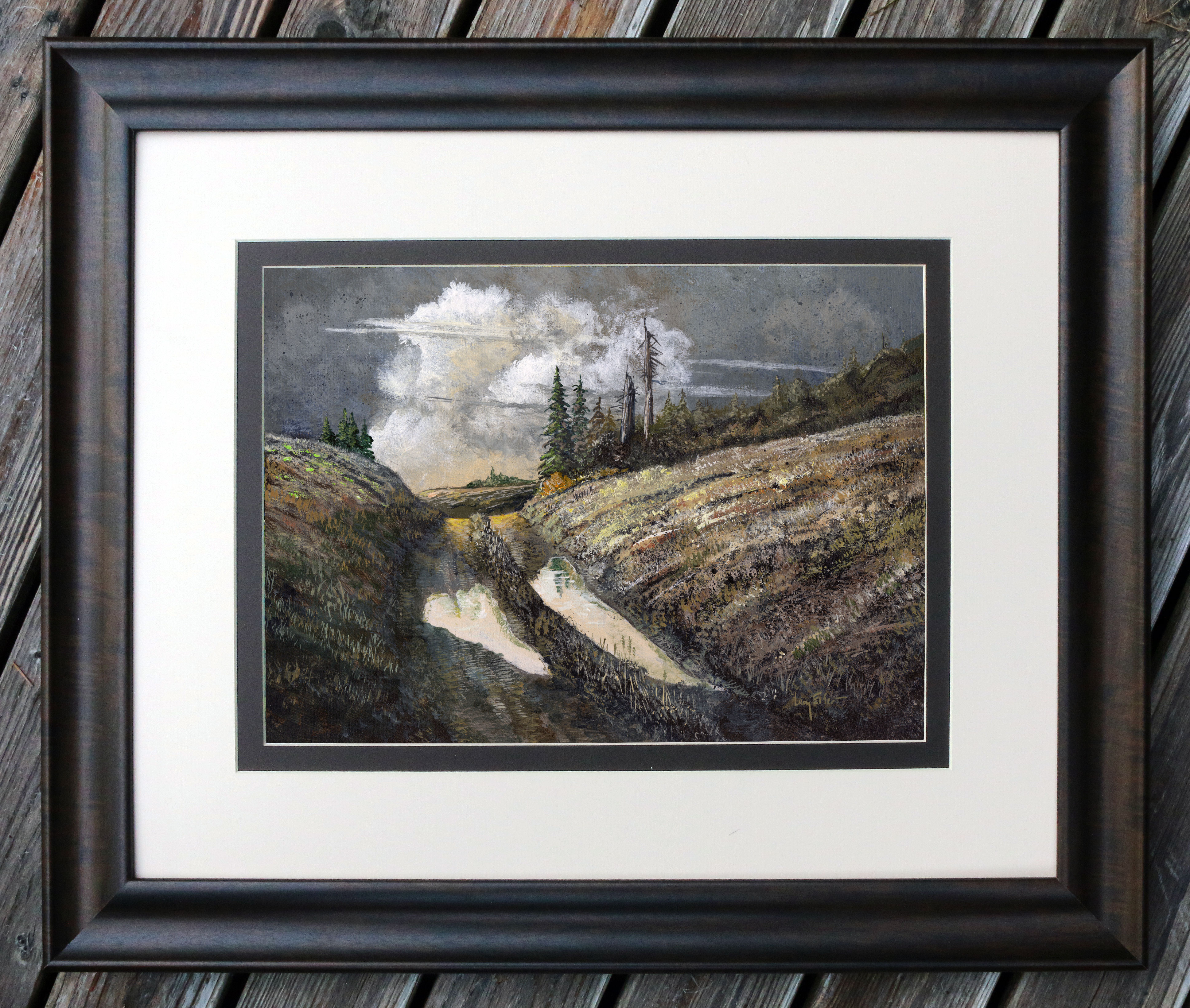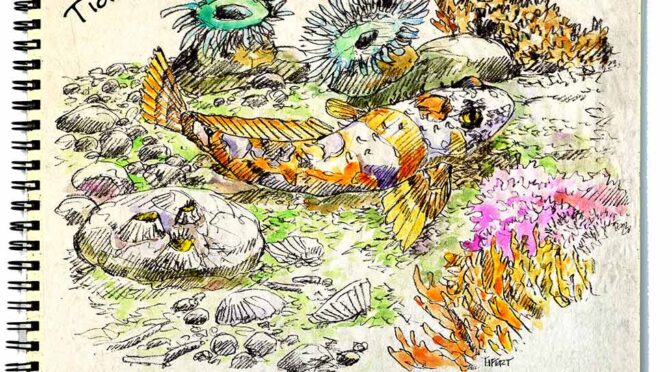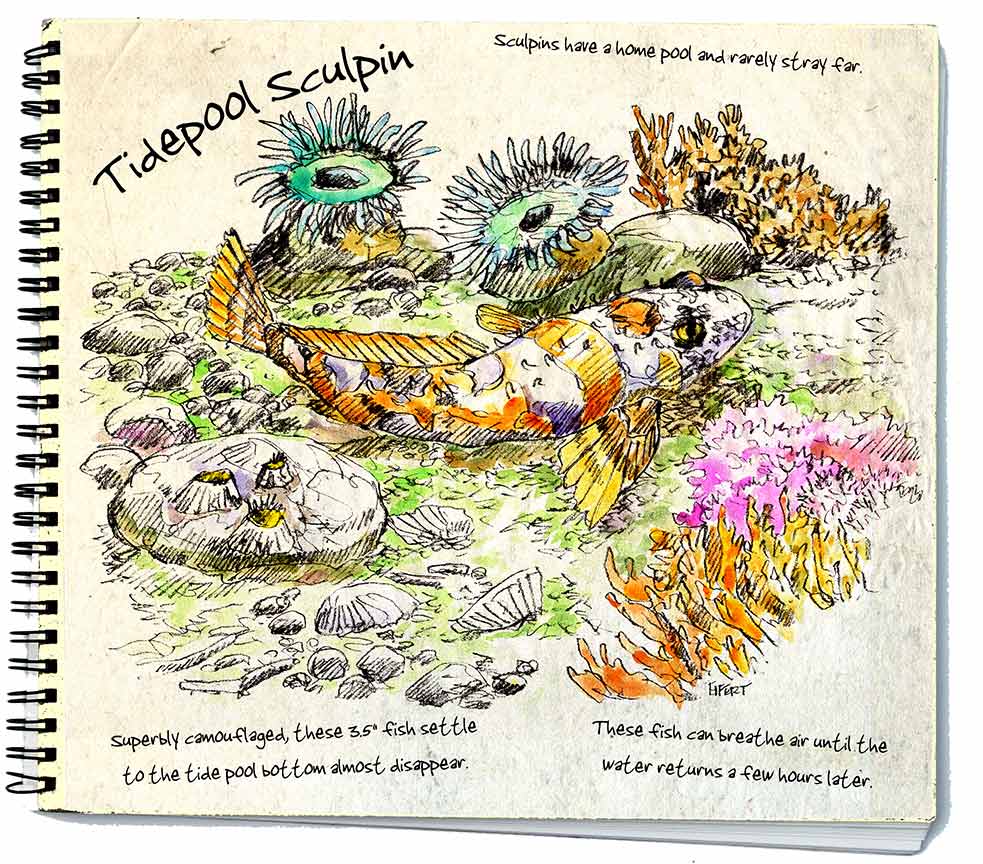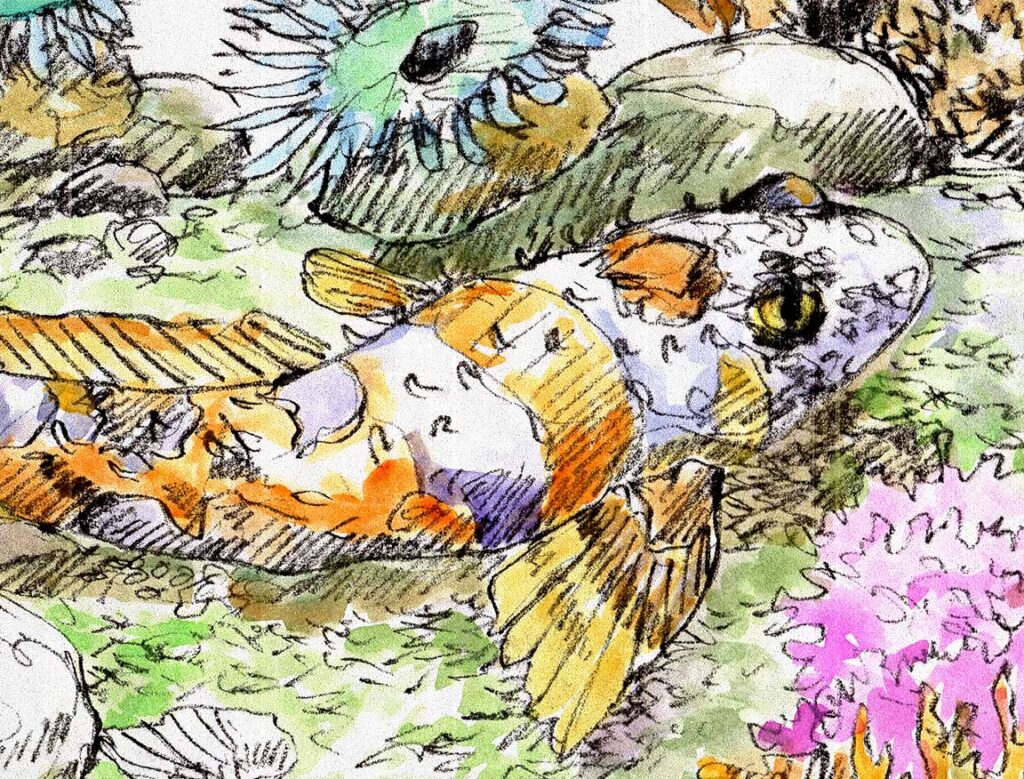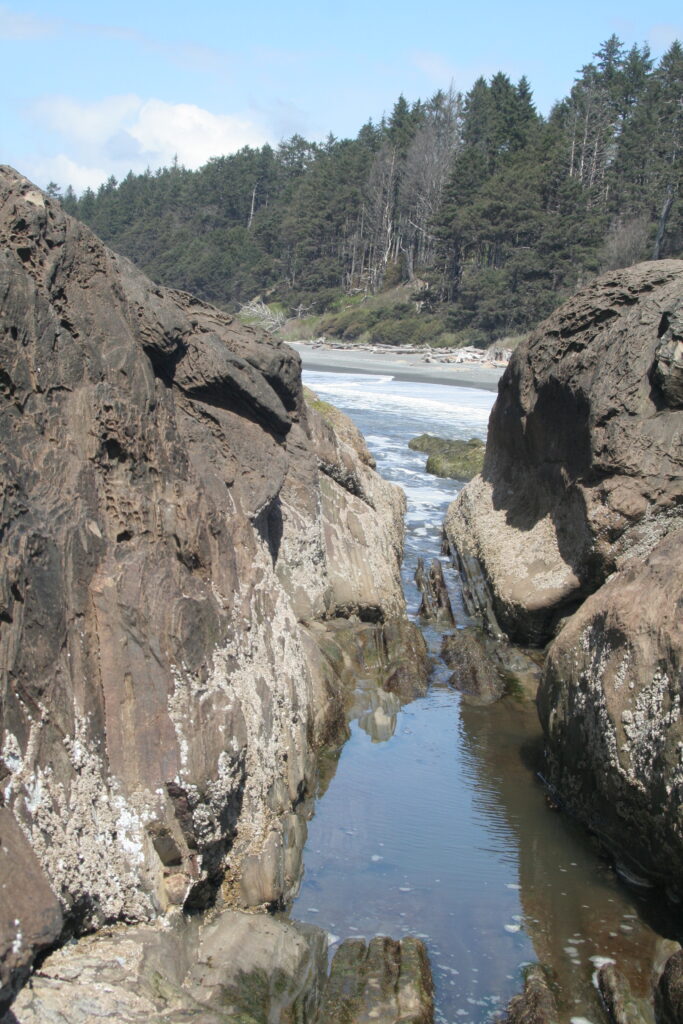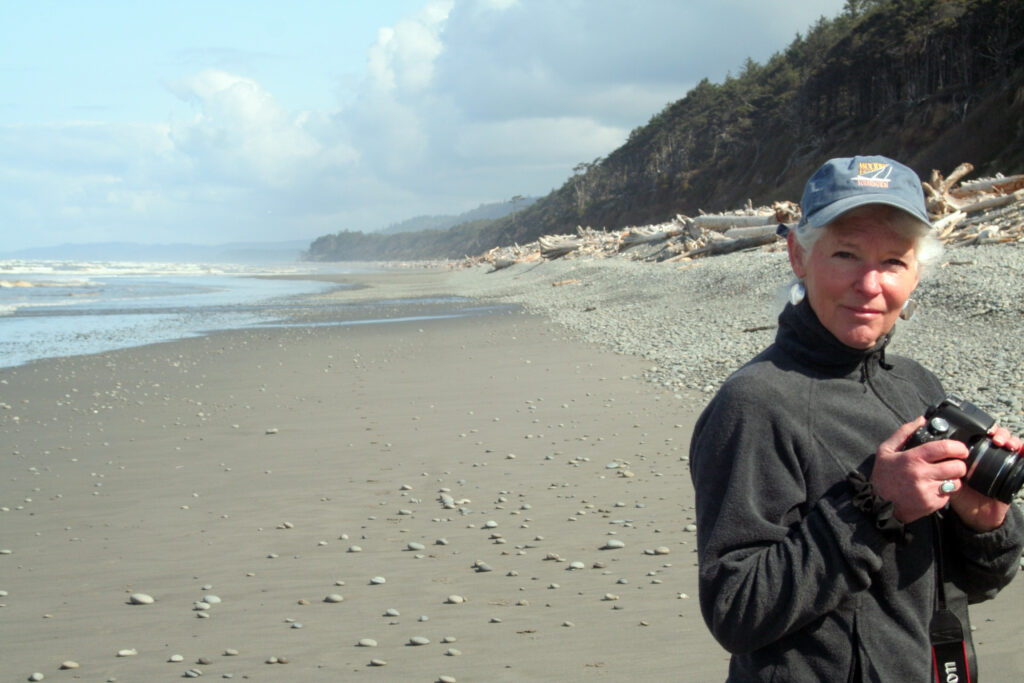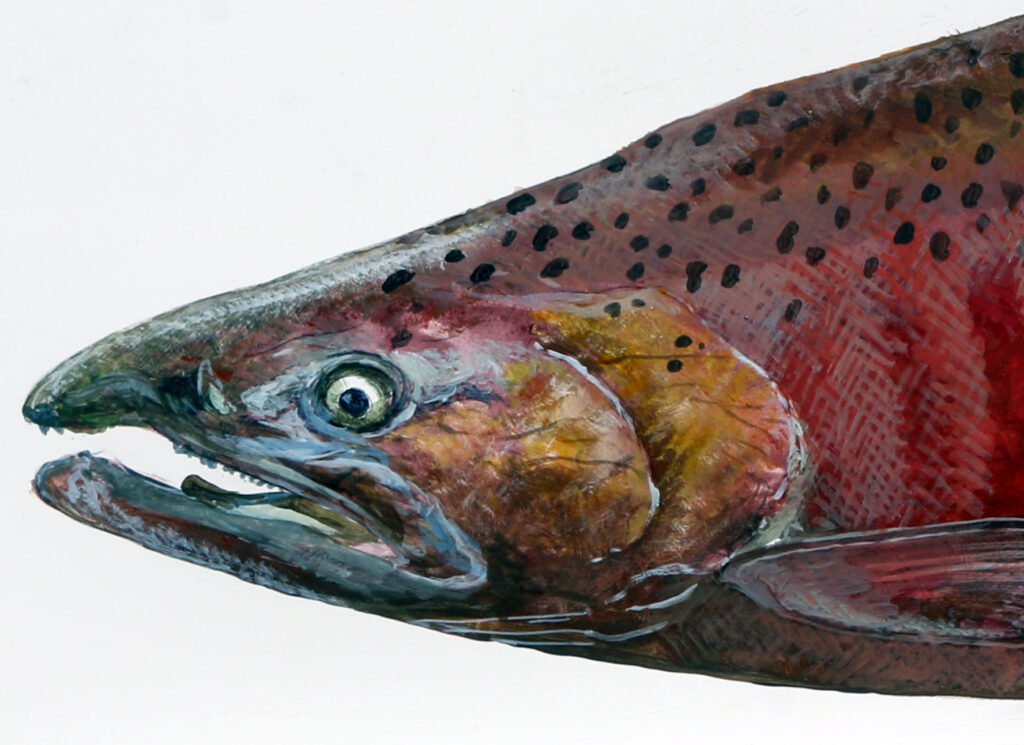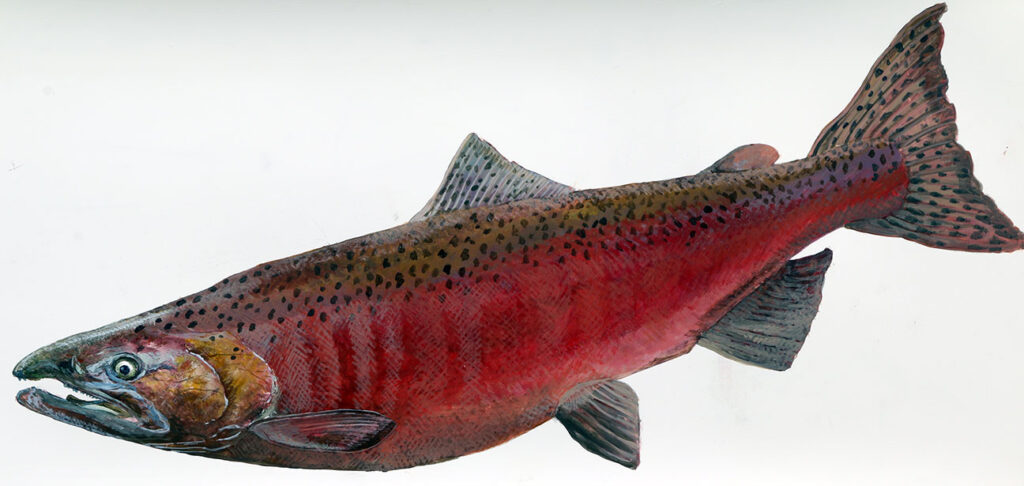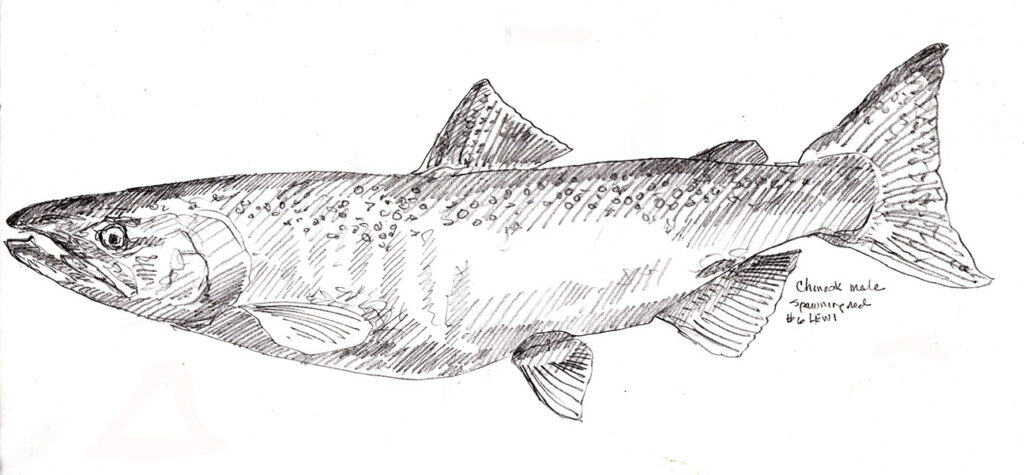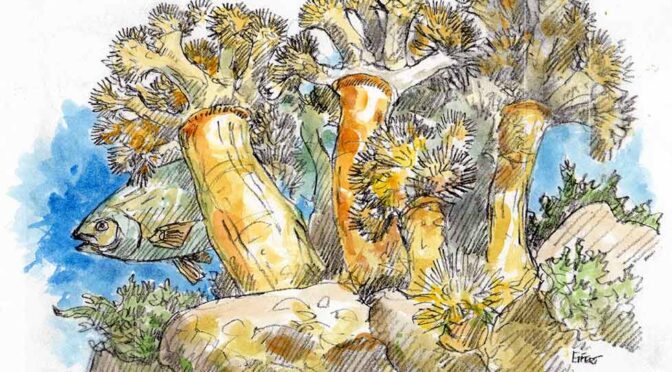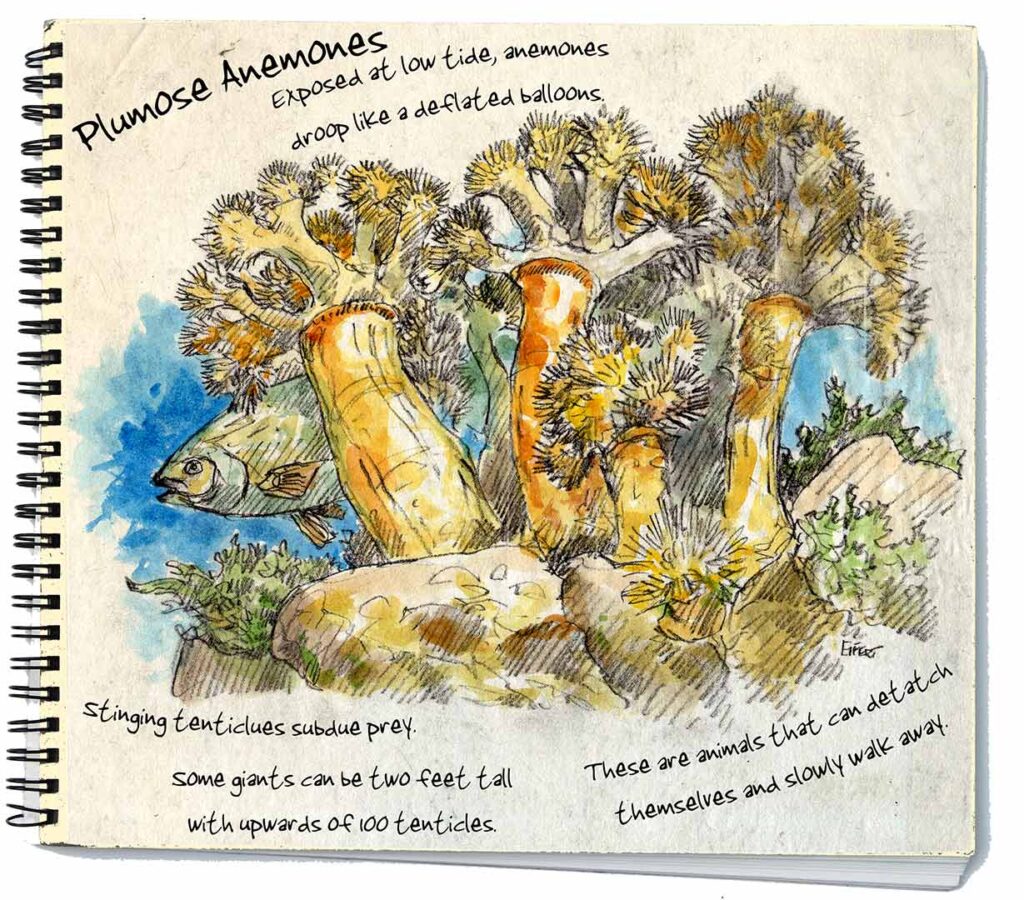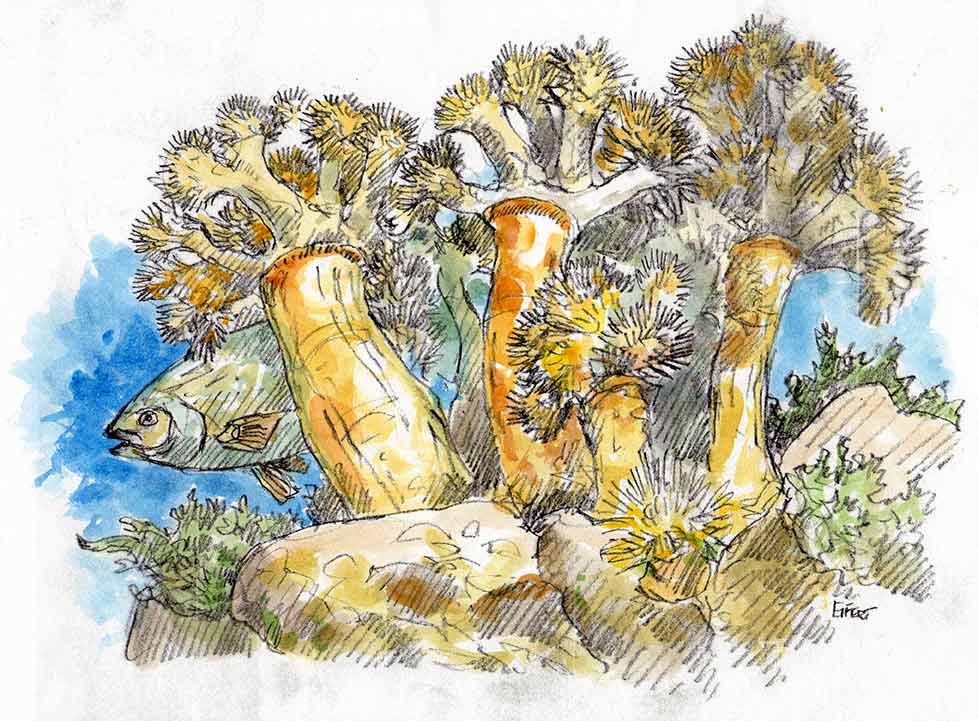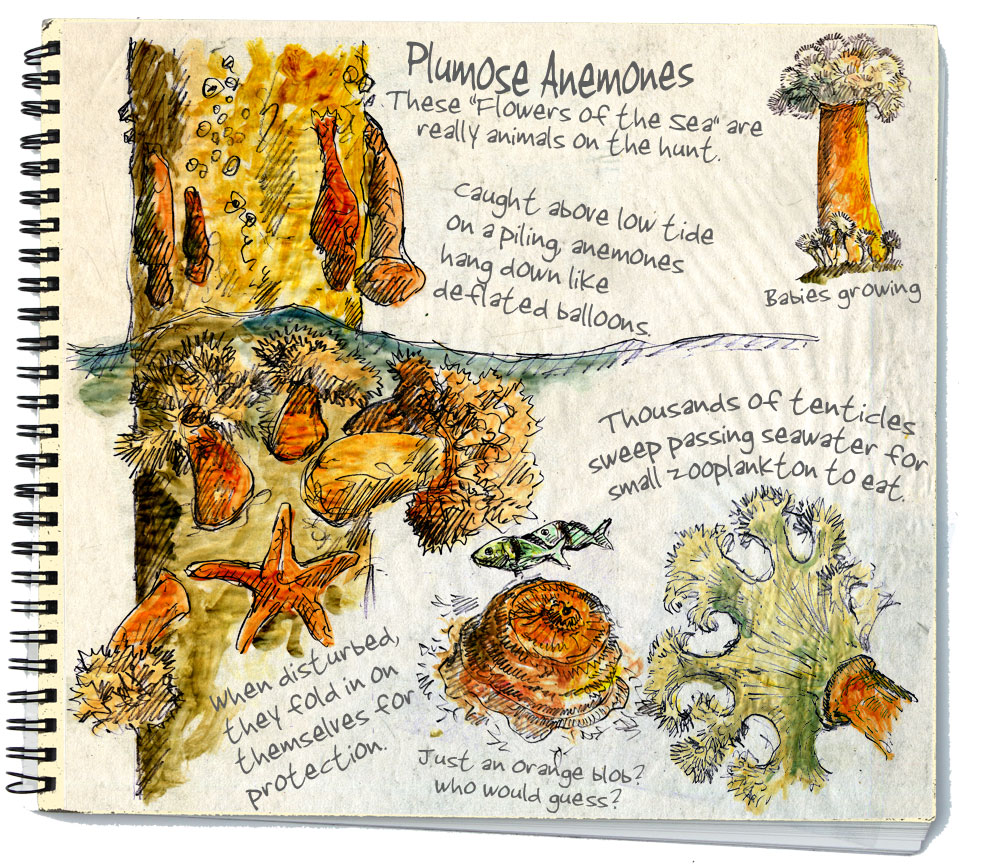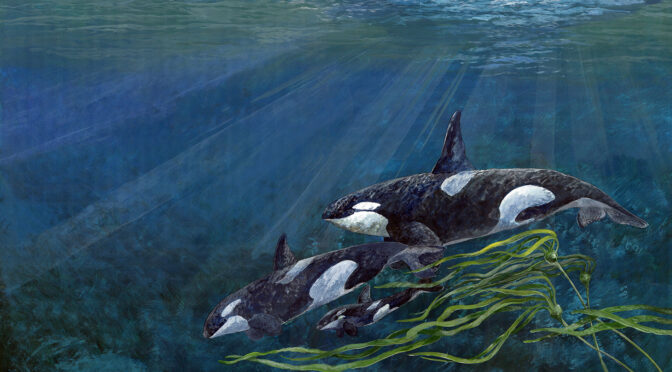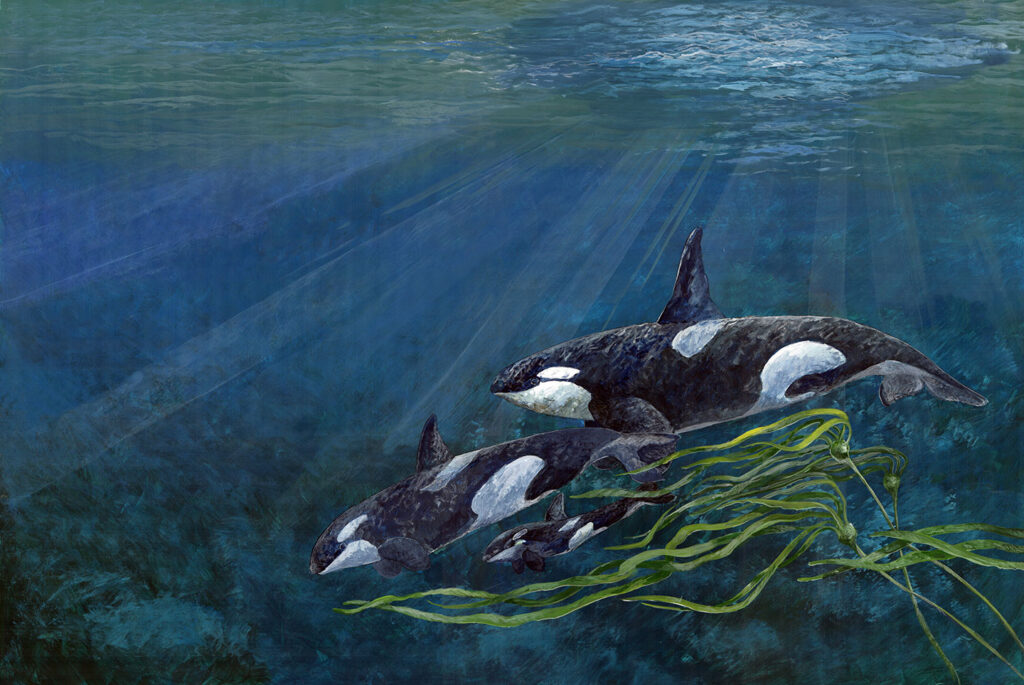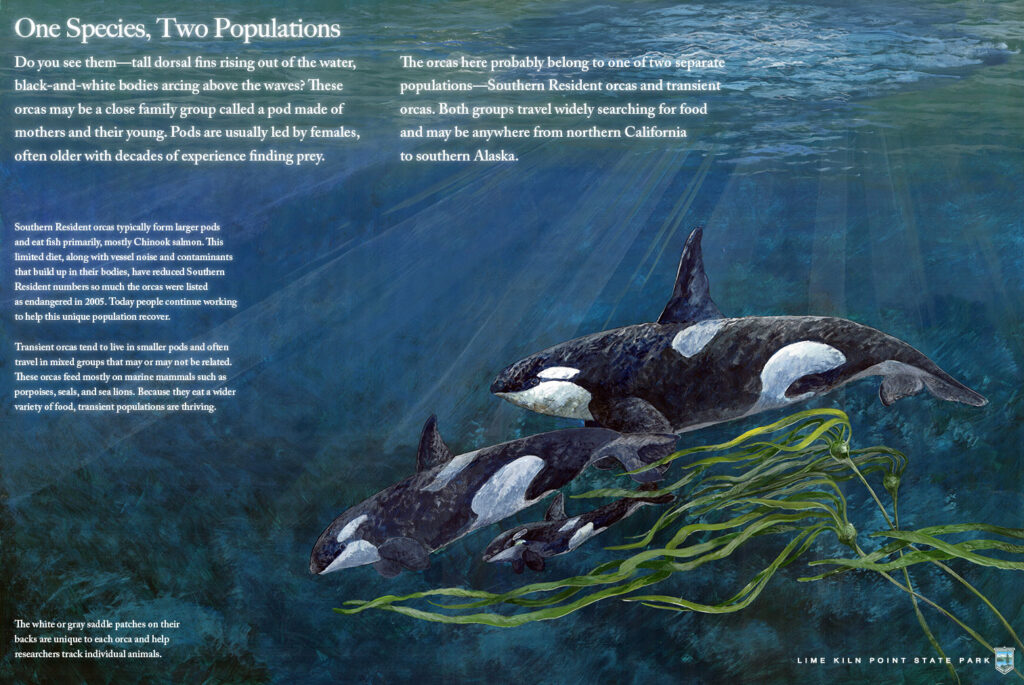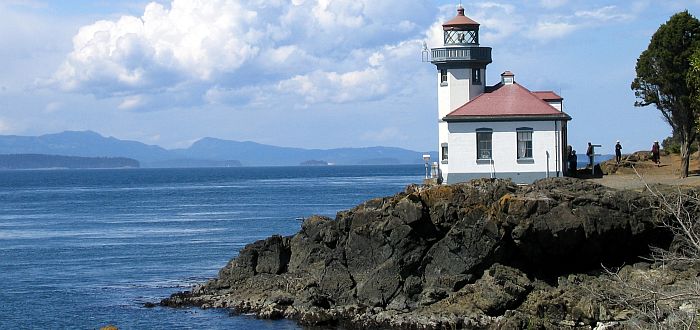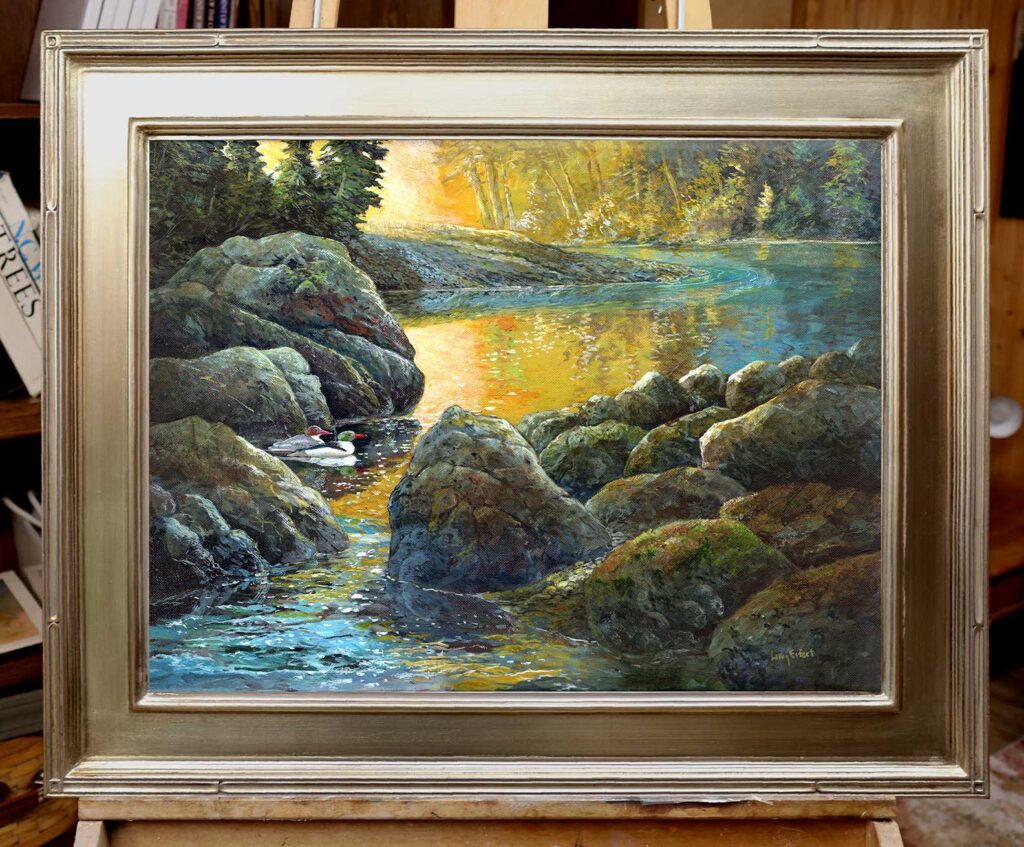
This painting is 16″ x 20″ acrylic on canvas, and is available. Email me if you’re interested at larryeifert@gmail.com. It’s also available with the nice Taos school inspired frame (like you see here) and I already have a shipping crate ready to go. The offering price framed as you see it here is $950 – shipping cost is extra but it will go double boxed UPS.
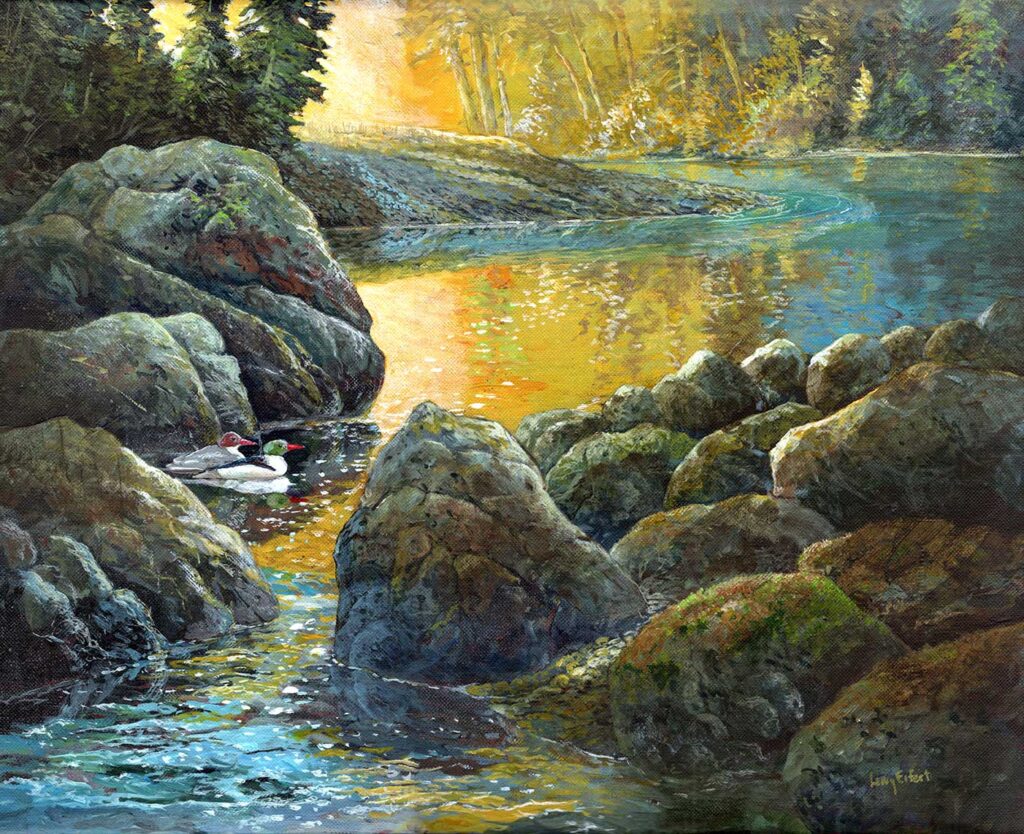
The Nooksack River, just south of the Canadian border in Washington State. It’s one of our favorite Northwest rivers because it drains water from two of the greatest Pacific Northwest peaks, Mt Baker and Mount Shucksan. North Cascades National Park: big mountains, big glacial power, and the river valley shows that with miles of beautifully sculptured river rock. I’ve painted this area before, but pulled this painting together after I found an unfinished canvas just waiting for me. For some reason, I started this then it just sat there. I especially liked the way the foreground goes blue at the bottom, showing the sky overhead, the water tinted with glacier flour that always makes these river more aquamarine than cobalt.
Someone already asked me about the ducks in the painting, a pair of common mergansers, male has the green head. In the Northwest, these guys spend winters out in salt water. Then in spring, mated pairs head back up rivers to nest in tree cavities beside their grocery stores – the rivers. Their routine is to float leisurely downstream from pool to pool, diving for fish, sometimes resting on a rock in midstream. Then they fly back upstream and start the routine all over again.

This, believe it or not, this was my model for the painting. I like to take an idea and just make it up into a painting that’s far beyond what I originally saw. Let’s see, bigger rocks, add the birds, make the thing glow with Hudson River School late afternoon light.
Again: This painting is 16″ x 20″ acrylic on canvas, and is available. Email me if you’re interested at larryeifert@gmail.com. It’s also available with the nice Taos school inspired frame and I already have a shipping crate ready to go. The offering price framed as you see it here is $950 – shipping cost is extra but it will go double boxed UPS.
Thanks for reading this week.
Thanks for reading this week.
Larry Eifert
Here’s my Facebook fan page. I post lots of other stuff there.
Click here to go to our main website – with jigsaw puzzles, prints, interpretive portfolios and lots of other stuff.
Nancy’s web portfolio of stunning photography and paintings
And here to go to Virginia Eifert’s website.
